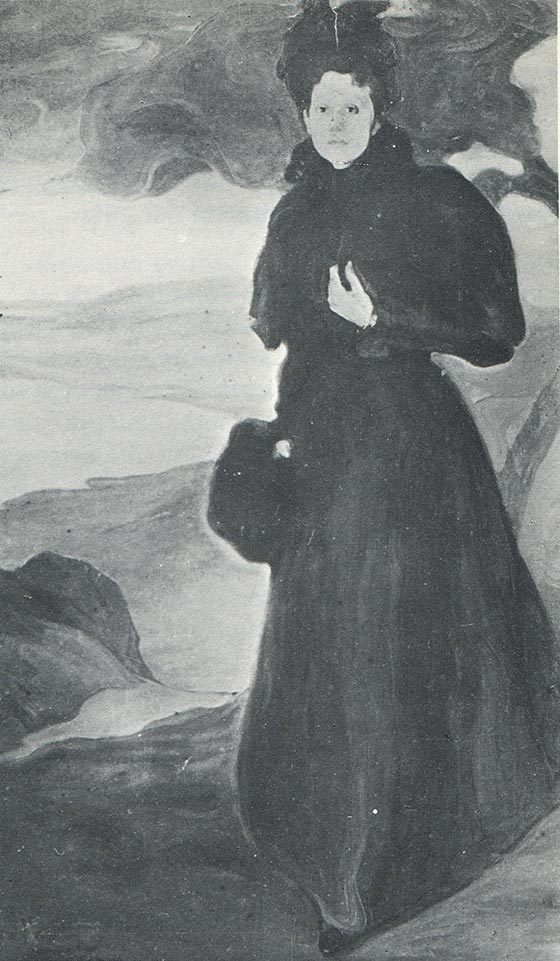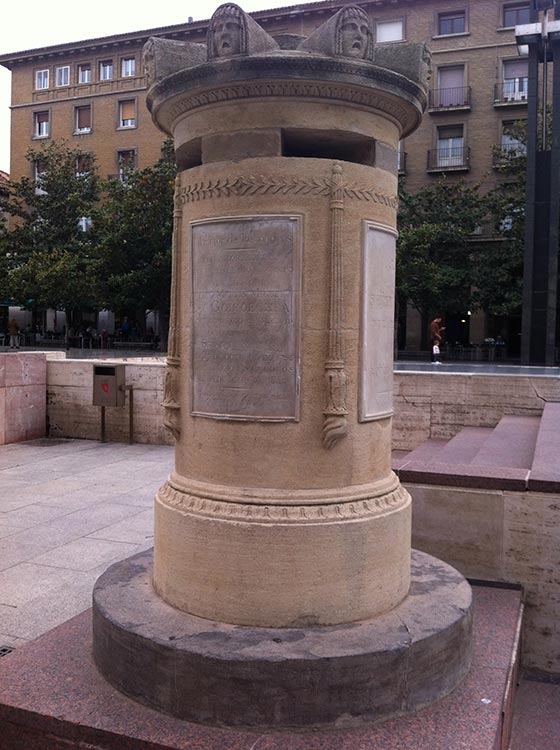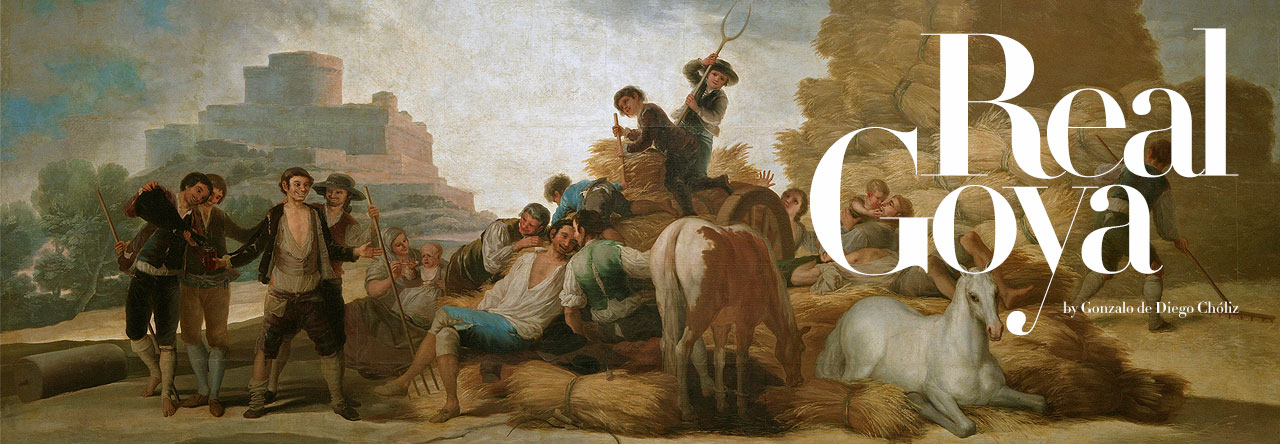Ignacio Zuloaga Zabaleta (Eibar, 1870. Madrid, 1945), painter of international renown, was a fundamental, if not decisive, character in the survival of the memory of Francisco de Goya. As in France and more concretely in Bordeaux, as in Zaragoza, Fuendetodos and Zumaya in Spain.
We know about his life in France (1), that he lives there for the first time as a child, when his family flees from the Carlist troops in 1872-1875 and settles in Saint-Jean-de-Luz.
In 1883 he moved to Paris to continue his studies in a school of the Jesuits. In 1889 he returned from Rome and settled in Montmartre, meeting Toulouse Lautrec and, above all, Maxime Dethomas, painter and future artistic director of the Paris Opera, known today as Opera Garnier. This encounter will change the course of his life: in 1895, the year in which E. Munch paints El Grito (The Scream), he portrays the sister of his friend, Valentine Dethomas, whom he married on May 18, 1899. The young couple passes the Summer in St-Médard in Jalles, in the environs of Bordeaux, in the property of the Dethomas, precisely when the exhumation of Goya just took place on June 5. There are only a few months left for Freud to publish his ‘Interpretation of Dreams’.

VALENTINE DETHOMAS PORTRAIT BY I. ZULOAGA
In the following years Zuloaga visits more and more the city and is integrated in the Bordeaux of Goya, where his older son will be born. Little by little the mentality of Goya is impregnated in him and feels a deep admiration. He searches for his works, acquires them and talks about them without ceasing. In 1901 he claims to have five Grecos. “And I also have a Goya, his best time. And a copper plate of his etchings. It is certainly the artist who speaks in these terms, but the man of heart will do for the memory of Goya what no one had ever done or would do after him.”
But let’s go back a while to remember that the first initiative to return the remains of Goya to Spain came from the Royal Economic Society Aragonese of Friends of the Country of Zaragoza (RSEAAP), which in agreement of November 6, 1863, at the proposal of Don Francisco Zapater y Gómez, among other signatories, required “that the ashes of the Aragonese painter Don Francisco de Goya y Lucientes be transferred to Zaragoza and be deposited in the temple of Nuestra Señora del Pilar, in a simple and dignified mausoleum that to this end would be erected”. It was also requested and approved that RSEAAP should promote and provide the means for both purposes to be carried out. The Royal Society also addressed the descendants of Goya, led by his grandson Mariano and got his approval.
In case of having the double management and agreement been successful, the mortal remains of Goya would rest today in El Pilar or, at least, in his city. But the effort failed because of lack of means, “despite asking for the help of those who denied it: The Royal Academies of San Fernando and History in Madrid, the one of the Nobles and Fine Arts of San Luis in Zaragoza, City Council of Zaragoza, the Provincial Council of Zaragoza and the Metropolitan Cabildo of the same city. Among all these institutions, only the City Council of Zaragoza promised to contribute its funds to the transfer of remains and to the mausoleum. The others were content to offer their cooperation indefinitely” (2). Not less than 35 years had passed since Goya’s death, and yet the notorious disinterest of the cultured part of Spanish society in general and Zaragoza in particular was evident by a genius of the quality and importance of Goya. Aragón had also lost all possibility of recovering for his land the body of the son possibly more illustrious of its history. And to that same later story I refer.
A second attempt was still to be made in 1869, on behalf of the Spanish Government on the eve of the September revolution and also before the abdication of Elizabeth II. It was intended and agreed that Goya was buried in Madrid on June 11. On this occasion the attempt culminated in another new failure, because at the last moment the Minister of Public Works of Spain ordered “to suspend all the proceedings… for not having yet fulfilled the 50 years of his death, precise formula for similar situations” …(sic). In this way, the story continued to be written… and Aragón plunged into the most absolute silence. Nothing to say, nothing to do, nothing new to prove.

Funeral monument
And comes the year 1899, have passed another 36 years since the previous plan and 71 since the death and burial of Goya in Bordeaux. There are no longer precise formulas for such cases, nor blockhead’s baton Ministers willing to stop it. After another 20 years of negotiations, going back and forth, paperwork, movements in the Chartreuse cemetery itself and endless reports, it will be from October 1888 when the Spanish Ambassador receives an order to request the French Government to transport to Madrid the remains of Goya. Along the way we see the disappearance of his head and even that had been shrouded with it, and of which subject there is very interesting approximative information, but at last! nothing will prevent the definitive transfer to Spain: to Madrid, of course. About Zaragoza is not spoken.
And it will be thanks to Ignacio Zuloaga, by the way, that we bear witness to the interest of Zaragoza and its private and non-official and academic institutions, for Goya, for his native town, Fuendetodos, and for honouring, publicizing and perpetuating the figure of Francisco de Goya. We return to the distinguished figure of Zuloaga since it is to him and to his permanent zeal and struggle that we must thank all the Aragonese that Goya today has a native house in Fuendetodos. Yes, a native house, and that said town began in 1903 to leave the most absolute anonymity and general ignorance.
After visiting Zaragoza and getting acquainted with the Goyesan reality of the city, in 1903 Zuloaga’s visits to the town and their investigations began on the ‘Casa de Goya’ accompanied by José Valenzuela de la Rosa and other friends from Zaragoza. The truth is that no one in the village knows how to give them concrete reason for the happiness and ignored natal house, which they will definitely identify in 1913.
Gonzalo de Diego
To be continued…

goya biografia
subrayando el coloso como mi obra favorita xd